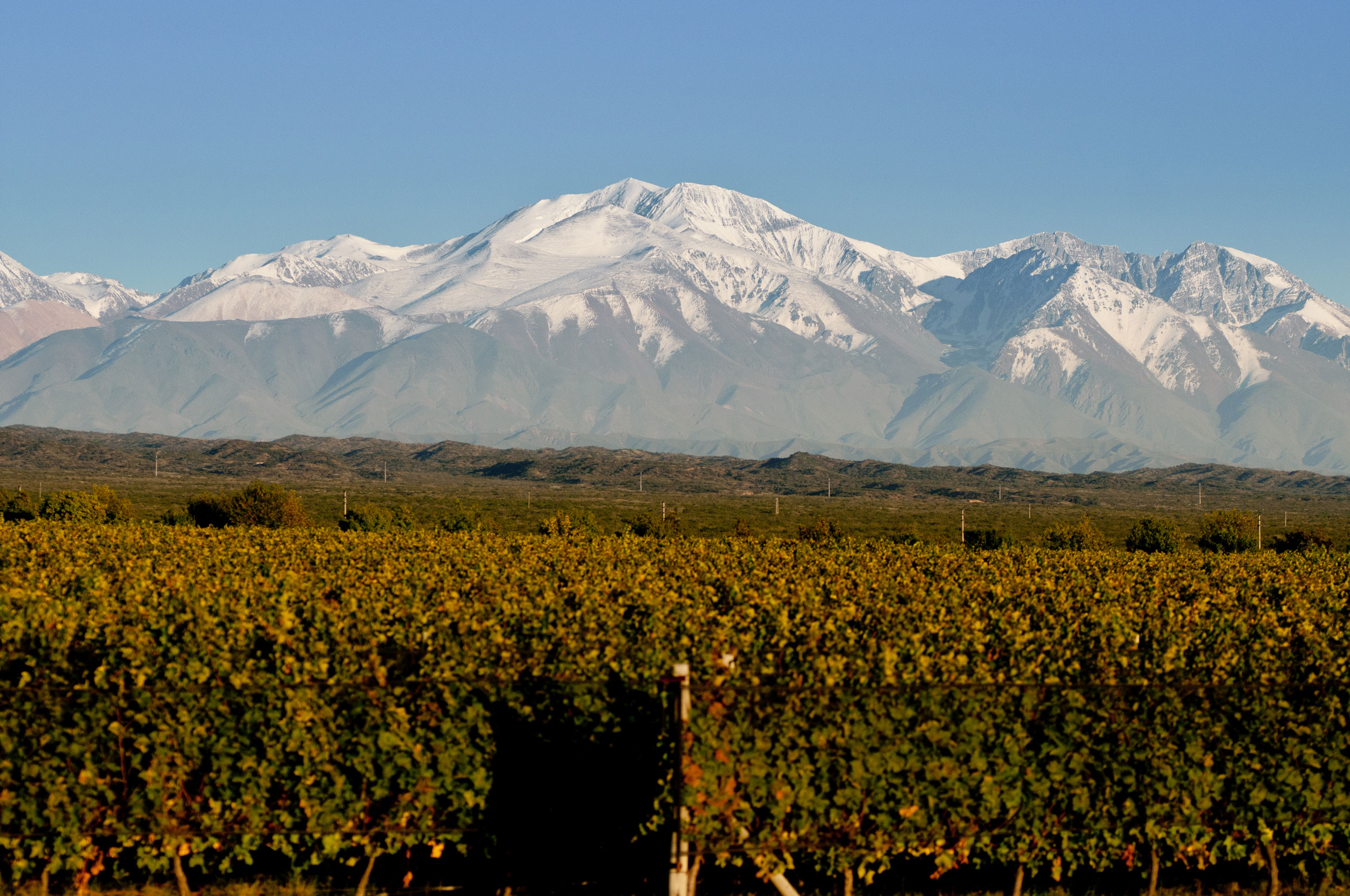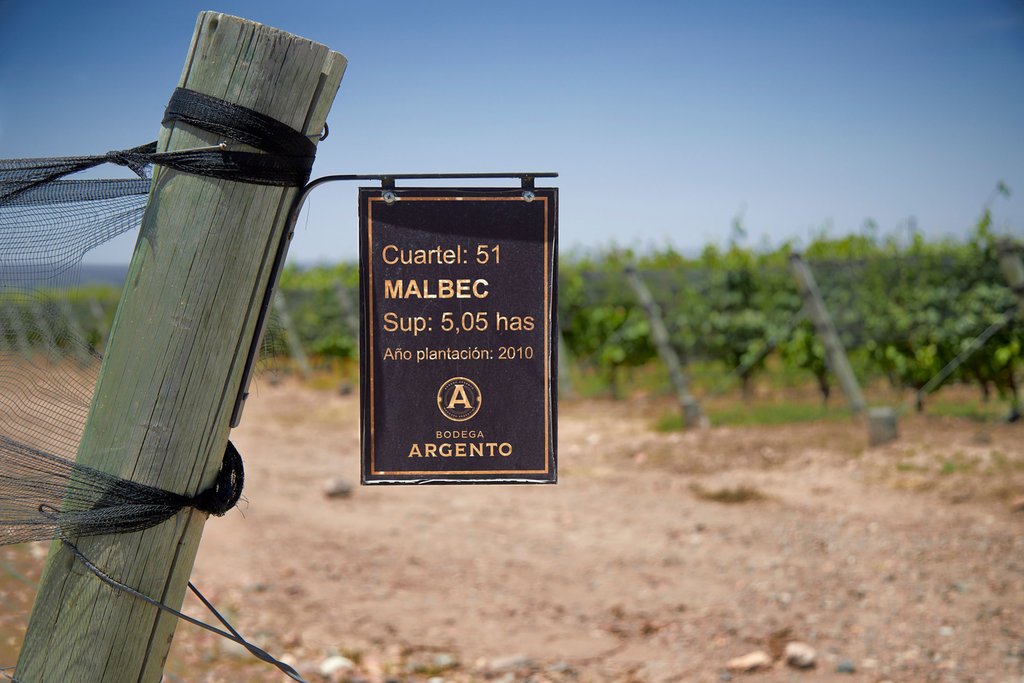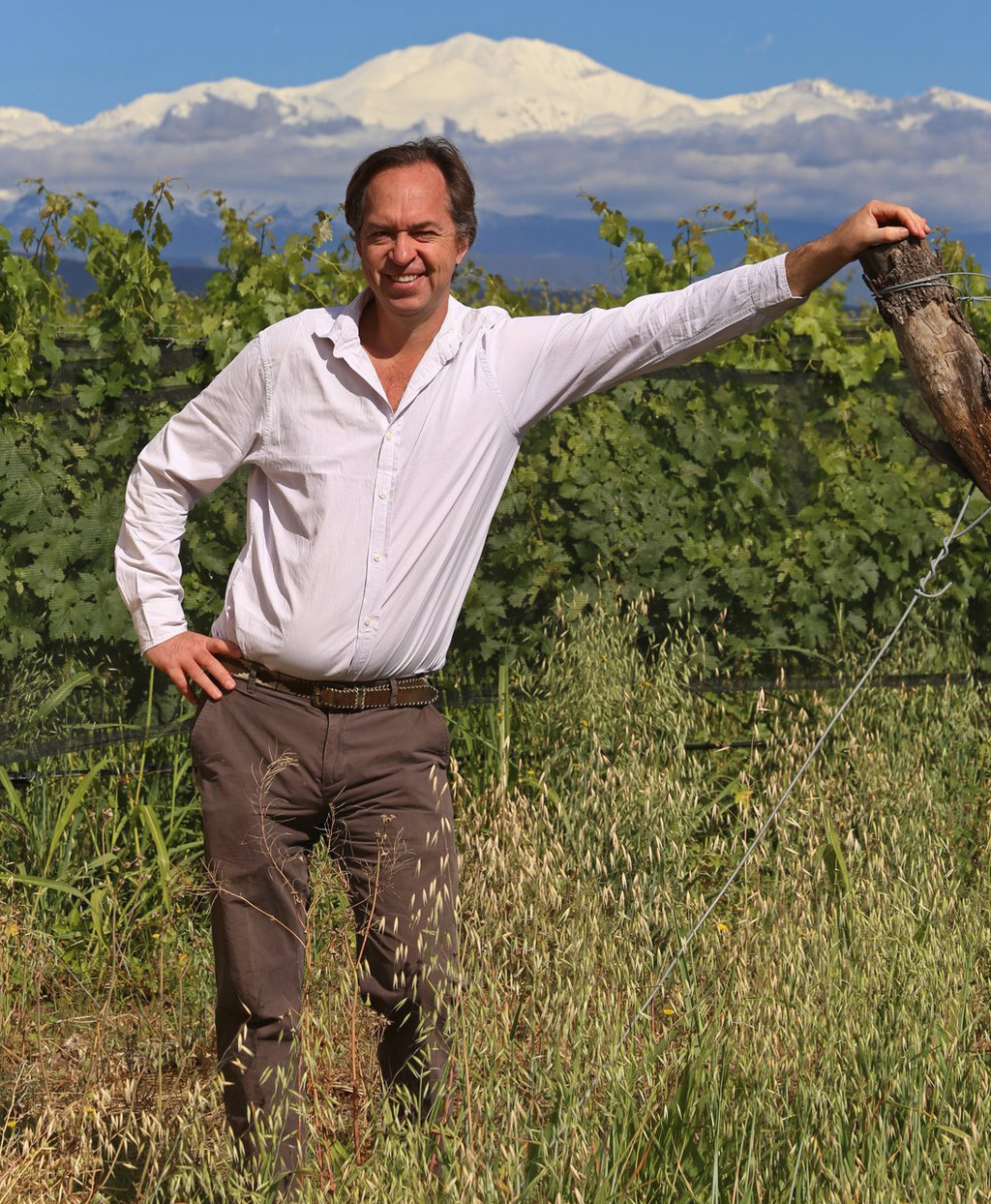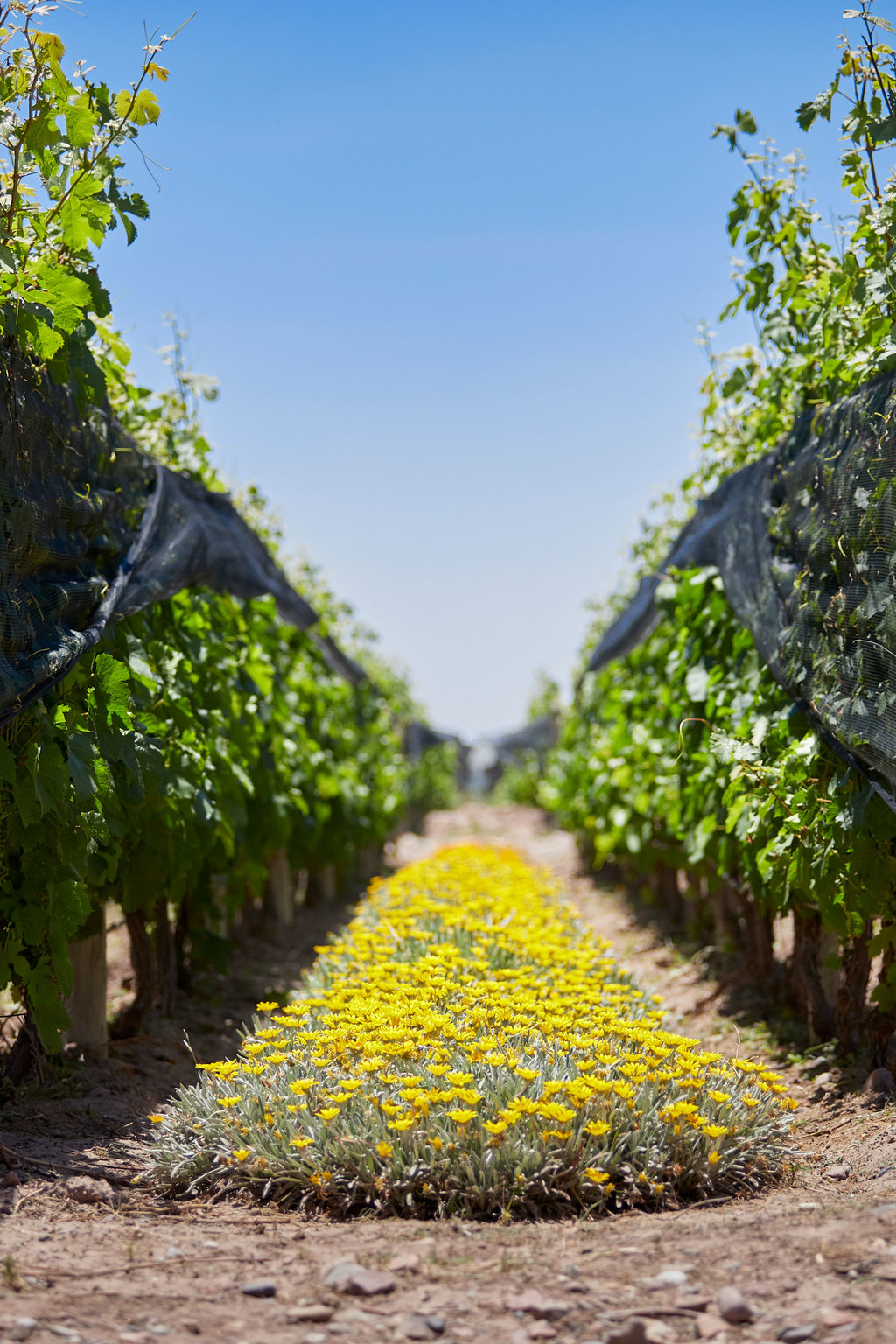Feature
Argentina winemakers talk inflation, exports and future of Malbec
With a new government in place, Argentina’s winemakers are hopeful of a continued uptick in the country’s economic fortunes – but it still faces multiple headwinds as we move through 2024. Jessica Broadbent reports.

Credit: Grupo Avinea
With sky-high inflation, volatile exchange rates and disappointing export numbers, Argentina’s winemakers have faced their fair share of challenges in recent years.
However, four months after Javier Milei was elected president, his government’s tough economic policies seem to be shifting the needle.
Inflation rates cooled for the third consecutive month in March to 287.9% – 11% on a monthly basis.
Winemakers are hopeful the new regime could bring relief to the industry if economic conditions improve.
“The current government intends to cut spending (something that needs to be done urgently) and to open up the economy and liberalise the exchange rate,” says Laura Catena, fourth-generation winemaker and managing director at Catena Zapata.
“If this happens, and Argentina becomes a true free-market economy, we are hopeful it would lead to more investment into Argentina and a general uplift of the economy, including wine.”
Milton Kuret, general director of wine-business chamber Bodegas de Argentina, says the new government’s measures have improved the competitiveness of exporting companies as inflation rates slow. “Unfortunately,” Kuret adds, “the decrease in inflation is accompanied by a sharp drop in consumption and economic activity.”
Kuret is hopeful the economy will continue to improve as we move through 2024 but says it will be “a complex year” for the domestic market, with “better expectations” for exports.
A complex exchange
Last year, Argentina exported 26.1% less wine (2m hectolitres) than in 2022. In value terms, exports fell 19.8% to €600m ($646.44m), according to the International Organisation of Vine and Wine (OIV).
Exports have been, as Bodegas de Argentina puts it, “decimated” by unreliable exchange rates, various tax regimes and the country’s lack of free-trade agreements. On average, Argentine-wine exporters pay 5% of their invoicing annually in market-entry tariffs.
In January, an 8% invoice tax – which had been dropped from 4.5% to 0% in September – was proposed under the new government’s reforms. Bodegas de Argentina warned at the time the proposals would “deepen the fall in the already decimated sales abroad with the consequent increase in wine stocks and decreases in the prices of raw materials”.
Kuret says: “Our chamber worked extensively with the authorities to prevent the project from materialising and we succeeded in halting its progress. At present, we have 0% export taxes.”
Catena says Argentina’s exchange rate has “improved somewhat”, adding: “With the previous government, there were times when we were getting less than half the exchange rate in pesos and at times, we were not even able to buy back dollars to buy things like barrels or pay our employees outside of Argentina.”
Domestically, the situation is more complex. Catena Zapata is having to revise pricing monthly and Catena fears changing exchange rates may impact tourism as travellers get less pesos for their dollars.
But she remains hopeful that with a “stable” economy and politics over the next two years, “2026 could be a much better year”.
You can never just rely on being an export-oriented wine producer.
Andrej Razumovsky, Alpamanta
While domestic pricing means it can be more profitable to export, Andrej Razumovsky, the CEO of biodynamic winery Alpamanta in Luján de Cuyo, Mendoza, warns against putting all efforts into one or the other.
“It's an ongoing thing depending on the devaluation, the inflation, the exchange rate,” he says. “You can never just rely on being an export-oriented wine producer, because tomorrow suddenly it will not be profitable, and then you have to push the domestic market.”
Razumovsky exports his wines to 30 countries, selling most in the US, Norway and Sweden. He says the UK is “the most attractive market for New-World wines” in Europe. “They are very open minded in terms of the New World,” he says. “It is a huge market.”
After a slow 2023, Catena says she is optimistic for 2024 in most markets, especially in Latin America. “There is a growing luxury consumer that likes to drink local in Latin America – and Argentina is considered local in Latin America as a whole,” she says.

Las Estelas founder and owner Estela Perinetti Credit: Las Estelas / Facebook
Estela Perinetti, founder of Uco Valley-based Las Estelas, also touts the potential of Latin America. After only a few operational years, the brand is sold in the UK, the US and Germany but also in Brazil, Uruguay and Peru. Perinetti says it’s easier for neighbouring, Spanish-speaking countries to understand both the language on the labels and the wine style – listing grape varieties rather than regions or appellations.
“When people look at French wine, or even Italian wine, they don't know where Pauillac is or what Saint-Esteph is. What is Romanée-Conti – besides being very expensive?” she says.
Brand creation in Argentina
For Kuret at the Bodegas de Argentina, the greatest challenge for Argentine winemakers is shifting from producing wine to becoming “designers of products” that stand out against international competition. “It’s a challenge that often surpasses their professional capacity to produce a good wine. Poor understanding of the consumer can lead to undesirable outcomes,” he says.
A consultant and ex-Catena winemaker, Perinetti has always grown and sold grapes on her family vineyards but launched Las Estelas five years ago. She says creating a brand can improve margins and protect growers from deflating grape prices.
“For growers, producers, everyone, inflation is tough. The economic conditions are difficult to plan [for]. The dollar export has changed dramatically,” she says. “It’s not easy but we still keep doing it because the alternative is to sell everything. That’s not something we will do.
“The vineyards have been in the family for 82 years and have suffered many crises… If we have four, or five years more – we will try to survive. My idea was to put a brand on what we are doing.”
Perinetti uses 40-45% of the grapes she produces – bottling around 100,000 (8,300 nine-litre cases) under the Las Estelas brand from a capacity of 250,00 bottles. She hopes within a few years to be able to use all of her grapes.
Creating a brand has allowed Perinetti “not to totally be a slave of big companies”. She says said during tough economic times “the ones that suffer are the growers. The big companies [lower] the prices of the grapes and some people do not survive”.
Selling high-quality grapes is not cost-effective in Argentina, Perinetti says, as the price does not increase sufficiently in line with the cost of producing them. “[Financially] it's better to have more production and a medium quality but, with the soil I have, I cannot do it. I have a very poor soil and relatively extreme conditions,” she explains.
Brand Malbec: what’s next for Argentina’s flagship?
Malbec forms around a quarter (47,000 hectares) of Argentina’s total vineyard plantings, Wines Of Argentina estimates.
More Malbec – and more-expensive Malbec – is exported than drunk locally. Last year, the variety formed 69.3% of total exports in volume terms according to the National Institute of Viticulture. When narrowed down to bottled wine, Malbec formed 71% of exports in volume (861,488 hectolitres) and 91% of total value ($373.3m).
Catena does not see a challenger for the country’s flagship varietal any time soon – instead seeing space for more styles of Malbec. “Malbec is like dark chocolate or Cabernet Sauvignon,” she says. “These are flavours that humans like because they are delicious and distinctive.”
Catena’s father, Nicolás, is widely credited with putting Argentine Malbec on the world map in the 1990s and she says the grape “has not gone through a slowdown since”.
“What’s exciting now is that we can taste Malbec from many parts of Mendoza and Argentina (different soils, altitudes, and latitudes),” she says.
We have only just started to see the diversity of terroir that Argentina can offer.
Laura Catena, managing director at Catena Zapata
The company’s research centre, The Catena Institute, has mapped regional Malbec variations for each of Argentina’s 110 appellations. Around 90% of the country’s vines are massale (a method of growing where the best vines are selected over the years to produce better, or desirable, new vines) and ungrafted. “This genetic diversity combined with the diversity of altitude and soils combines to give endless diversity of flavour for Malbec and other varieties,” Catena says. “We have only just started to see the diversity of terroir that Argentina can offer.”
Catena says “preserving genetic diversity” of Malbec is one of the company’s key areas for investment. “The diverse massale selections of Malbec only exist in Argentina, and I think there are part of the elegance and texture behind Argentine Malbec. It would be virtually impossible for any other country to reproduce this kind of genetic diversity,” she says.

Malbec vines at Bodega Argento. Credit: Grupo Avinea
While Catena says Malbec’s popularity remains strong domestically, others have noticed a move away from it as locals want to try something new.
Las Estelas says Malbec is “probably the most difficult wine I have to sell” in Argentina. Instead, the domestic market is more interested in Cabernet Franc, Cabernet Sauvignon, Pinot Noir, Chardonnay and Syrah.
“The [domestic] market is quite open to diversity. They look for it,” she says. “In Argentina, we drink mainly local Argentine wines because the portfolio of international wine is very small, the taxes are huge, so the prices for us are crazy.”
Mendoza-headquartered Grupo Avinea says Cabernet Franc has the potential to become the “second best” red grape from Argentina in the medium- or long-term, having seen keen interest in the variety domestically.
Andres Valero, head of sustainability and CSR at Grupo Avinea, says white varieties like Chardonnay, Sauvignon Blanc and Pinot Grigio have also seen “a lot of success” in its domestic market. The group is now looking to increase exports of these wines.
Grupo Avinea, which owns Bodegas Argento, is one of the largest producers of Pinot Grigio in Mendoza but only exports the wines to a handful of markets due to intense competition – especially from Italy.
When produced in cooler southern regions, like Patagonia, Valero says Argentine Pinot Grigio can be similar to European styles but is still tricky to sell in some markets. “It’s difficult to compete with Italy,” he says. “Even when you have the same price point – and you have a better quality for the same price point.”
Razumovsky at Alpamanta is noting rising interest in natural wines and more producers making it. His portfolio is now 50-50 natural and “classic” wines and he says natural wines have taken off in popularity in the last two or three years, with natural-wine bars and shops popping up since the pandemic – though not to the scale of London or New York.

Andrej Razumovsky, CEO of Alpamanta. Credit: Alpamanta / Facebook
While he thinks the overall natural wine category will stay strong, he says Pet-Nats are “another story”. With high margins to be made on the sparkling wines, competition is fierce and the sub-category at risk of falling out of fashion, he says. “It’s something that is very trendy at the moment. I don't think that it will last forever. There's already some markets that that are seeing a turn.”
Water “crisis” in Argentina
Water scarcity is one of the most pressing environmental issues facing winemakers in Argentina.
“What we’re seeing very clearly in Mendoza, is changing availability of water,” says Valero. Mendoza’s vineyards are irrigated by snow melt from the Andes, which feeds into rivers and aquifers.
Valero says for over a decade the snow has been 20-30% – and some years even 50% – less than average. Water for production is getting scarcer and wineries with wells are forced to dig deeper for supplies.
Grupo Avinea and Catena both use drip irrigation – which uses around 50-70% less water than “traditional but wasteful” flood irrigation.
“This is one of the situations where ‘tradition’ goes against preservation, and where an innovation as simple as drip irrigation can have a large impact,” Catena says. “We also capture rainwater and have created ‘represas’ or small reservoir lakes, in all our family-owned vineyards. Water is stored in these reservoirs to be used during the growing season, when the vines are working hardest.”
However, Valero points out growers with water access often choose to use flooding to save on energy and installation costs.

Flower cover crops at Bodega Argento. Credit: Grupo Avinea
Increasingly erratic weather events have also plagued Argentina’s last few harvests.
In 2023, Argentina’s wine production fell to a six-decade low of 8.8 mhl – down 23% on 2022. The OIV said the result was “primarily” due to spring frosts and hailstorms. “There were a lot of climatic problems that we used to have but not so many times and not so severe,” Valero says.
Razumovsky says when he started Alpamanta there was a spring frost every decade but now they are the norm. A spring frost can damage vines during the critical budding stage, taking up to half of the year’s crop.
While Argentina is facing its fair share of headwinds, its winemakers remain hopeful things will improve – and confident in the quality of their wines. “Argentina is like the Galapagos of wine – the diversity is out in the open, in all the commercial vineyards,” says Catena. “Other countries have most of this diversity in research institutes.” With a broad portfolio and thirst to expand internationally, Kuret says: “Argentina has all the conditions to grow.”